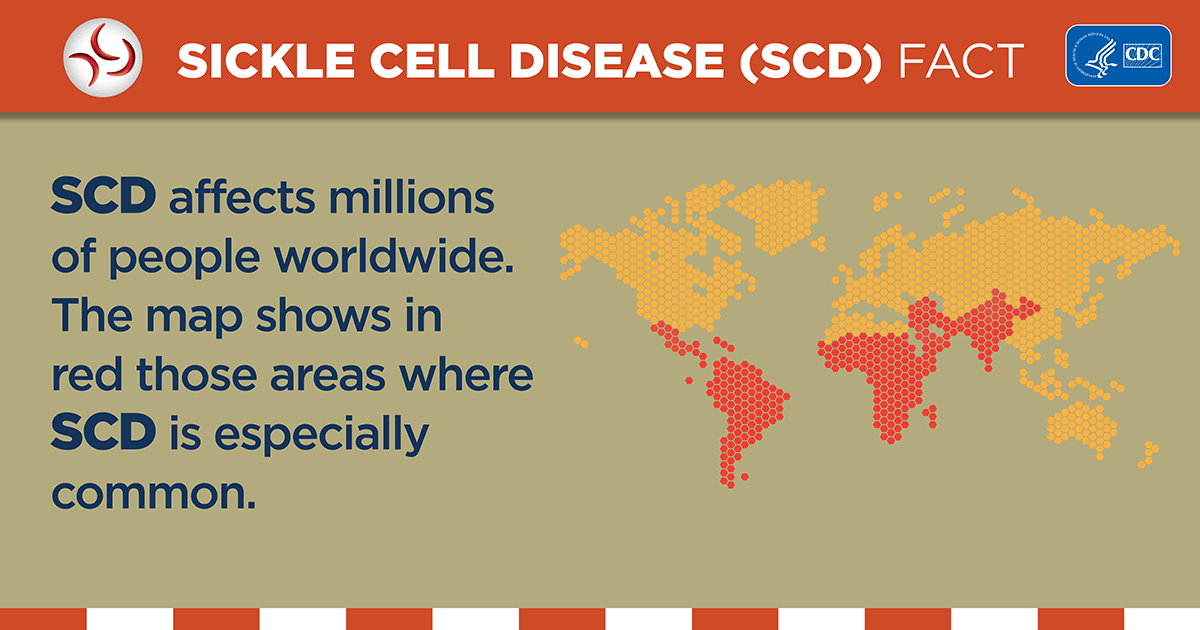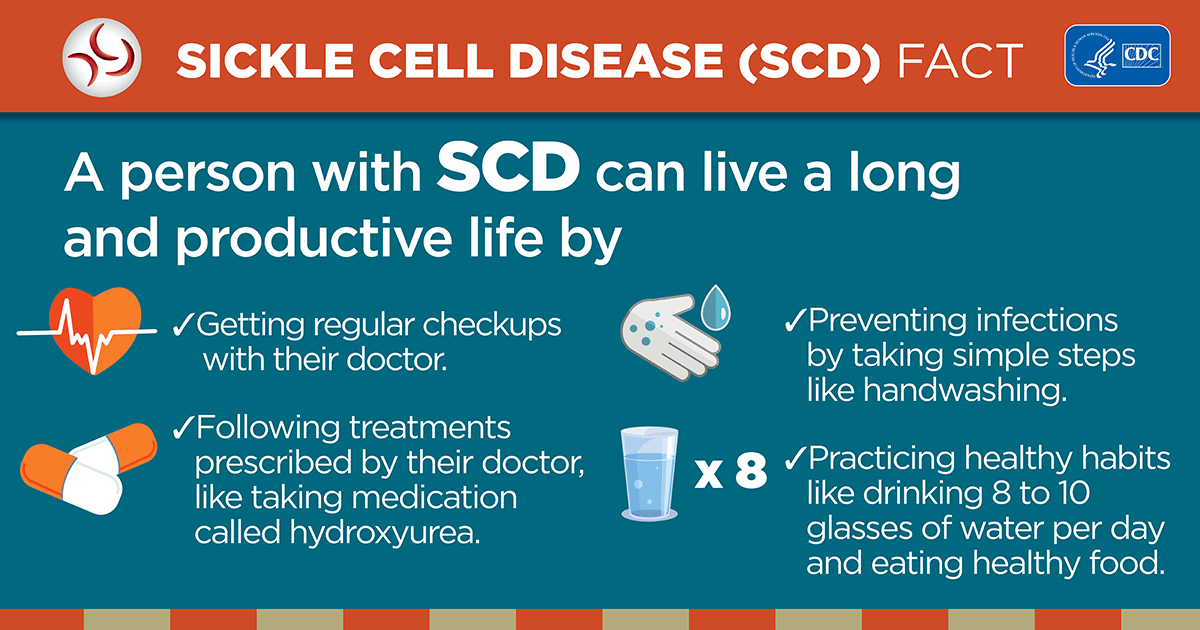5 Fast Facts About Sickle Cell Disease on World Sickle Cell Day

Today is World Sickle Cell Day. Sickle cell disease affects millions of people worldwide and is particularly common among people originating from sub-Saharan Africa, Saudi Arabia, India, South America and Central America, and Mediterranean countries, such as Turkey, Greece, and Italy.
- Sickle cell disease is a group of inherited red blood cell disorders. The red blood cells become hard and sticky and look like a C-shaped farm tool called a “sickle” and the cells die early, which causes a constant storage of red blood cells. Healthy red blood cells are round and move through small blood vessels to carry oxygen to all parts of the body.
- SCD affects approximately 100,000 Americans and occurs in about 1 out of every 365 African-American births.
- To get SCD, the trait must be inherited from both parents who already have the SCD trait. People with the trait usually do not have any of the signs of the disease and live a normal life, but they can pass the trait to their children.
- SCD is diagnosed with a simple blood test. It is most often found at birth during routine newborn screening tests. Early diagnosis and treatment are important.
- The only cure for SCD is a bone marrow or stem cell transplant. These transplants are very risky, and can have serious side effects, including death. For the transplant to work, the bone marrow must be a close match (usually a brother or sister).

The Department of Health and Environmental Control (DHEC)’s Sickle Cell Program helps people who have SCD pay for medical services, supplies, equipment and medications. To learn more about the program visit: https://www.scdhec.gov/health/child-teen-health/services-children-special-health-care-needs/18-and-older-sickle-cell.